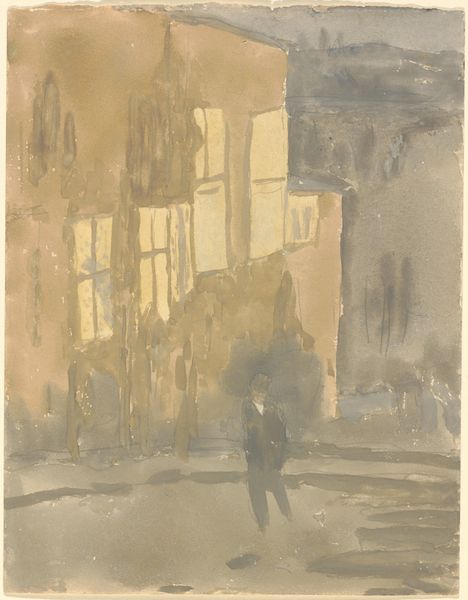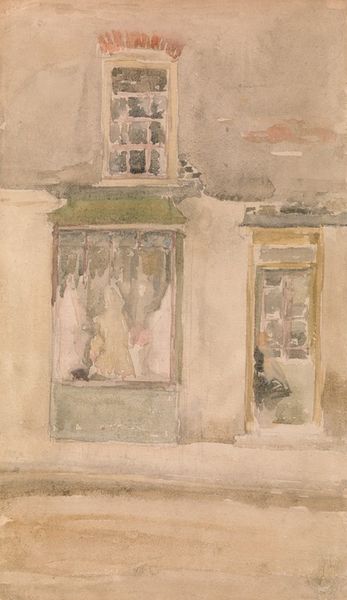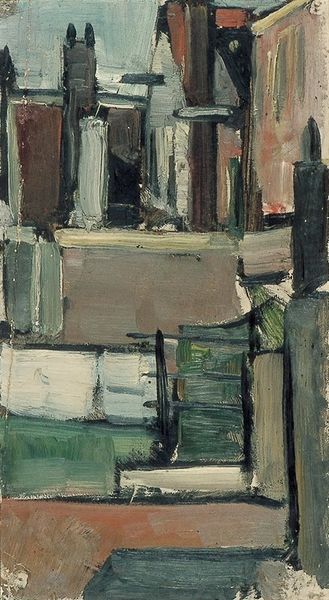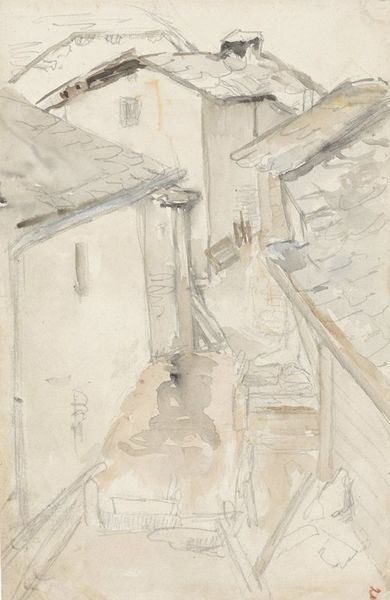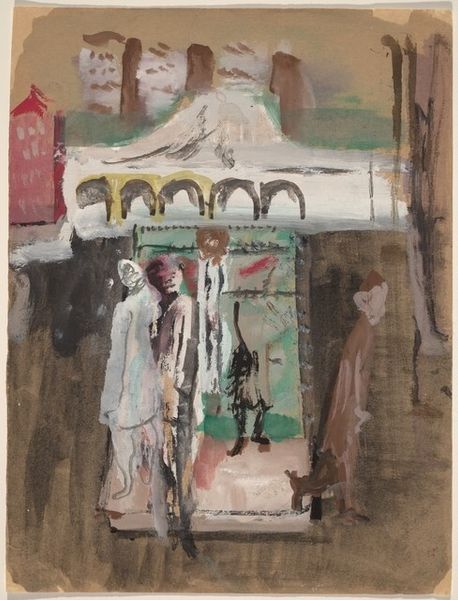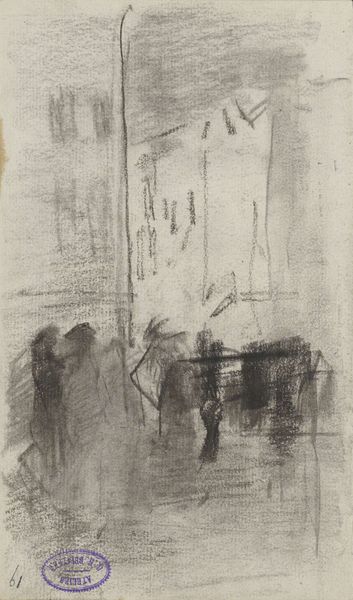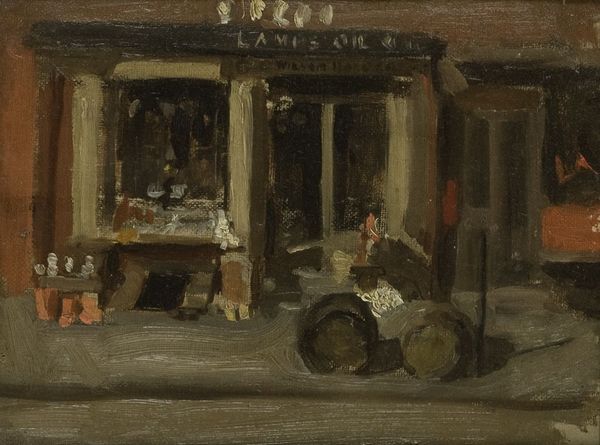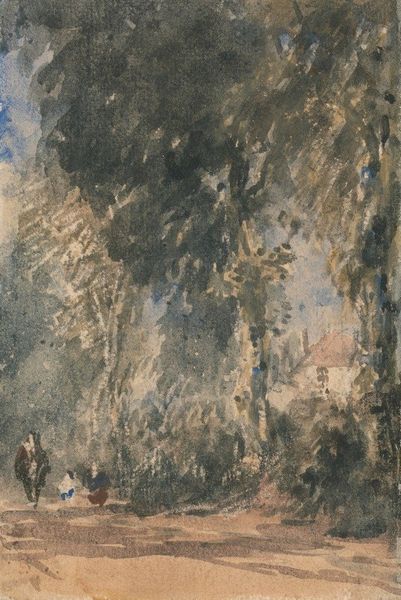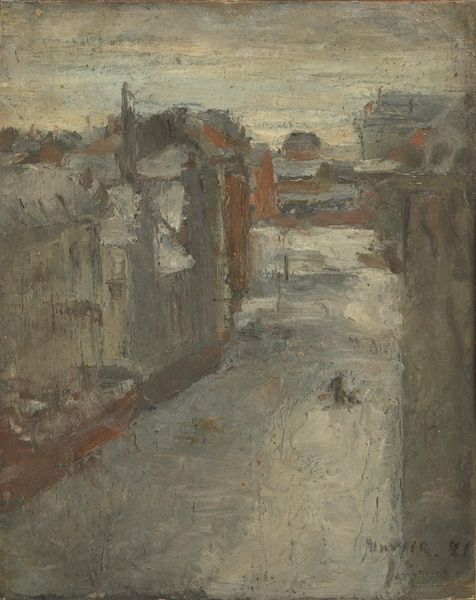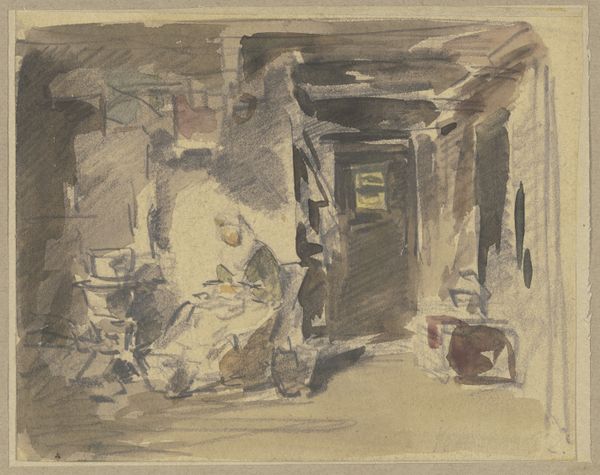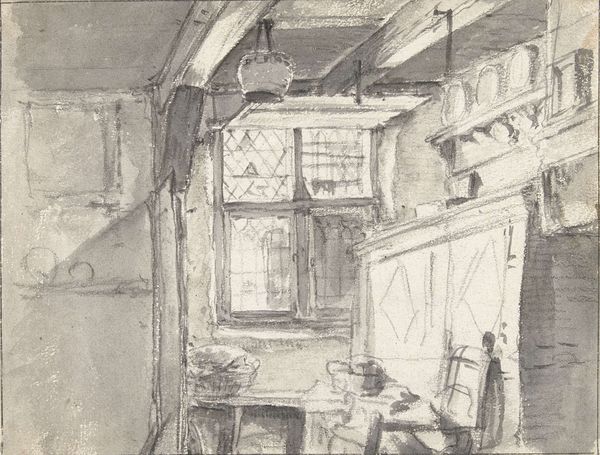
Copyright: Public Domain: Artvee
Editor: This watercolor and charcoal drawing is James Abbott McNeill Whistler’s "Facade of a House" from around the 1890s. It feels muted and dreamlike to me, almost like a memory fading. What do you see in this piece? Curator: I see layers of veiled stories, peeking out from behind the facade itself. Whistler's choice of watercolor and charcoal is crucial here. Notice how the blurring effect creates a sense of impermanence. The house becomes a vessel for the past, reflecting how our built environment is laden with emotional and cultural resonance. Editor: So, you're saying the house isn’t just a building but a symbol? Curator: Precisely. Buildings often embody the collective memory of a place, or even a family. The architectural details—the windows, the slightly obscured figure inside— hint at untold narratives, lives lived within those walls. Does the somewhat obscured view remind you of other urban settings in art? Editor: I hadn't thought of it that way. The focus on the windows gives the composition a sort of voyeuristic point of view, now that I think about it. Curator: Indeed, what emotions do the windows convey to you? Windows often represent liminal spaces—thresholds between the inner and outer worlds. In this facade, does the exterior reflect the internal psychological landscape? It invites reflection on our relationship with these transitional boundaries between privacy and publicity, perhaps suggesting the cultural weight these places and symbols hold. Editor: I see what you mean. Whistler seems to be using the facade to suggest a much larger, layered, symbolic history. Curator: Yes, and perhaps inviting us to remember the weight of culture in our everyday surroundings.
Comments
No comments
Be the first to comment and join the conversation on the ultimate creative platform.

